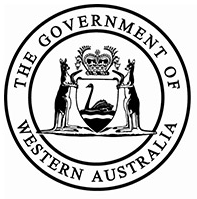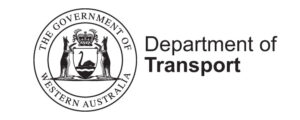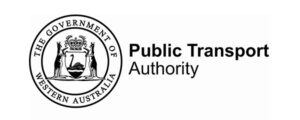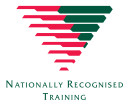Certificate IV in
Work Health and Safety
BSB41419
BSB41419 - Certificate IV Work Health and Safety
The Certificate IV in Work Health and Safety is designed to provide students with the fundamentals of occupational health and safety across all a broad range of industries in Australia. It is relevant to supervisors, health and safety representatives, safety officers and those are involved in the management of occupational risk. The Certificate IV is considered the minimum qualification required for anyone wishing to work within the field of occupational health and safety.
What You'll Learn in the Certificate IV in Work Health and Safety Course
This course will take you through the aspects of work health and safety from start to finish. You will be learning the key components and concepts of work health and safety processes and procedures.
Through the Certificate IV you will develop your skills in drafting emergency plans, assisting with compliance of WHS laws, assisting with responding to incidents, and implementing and maintaining WHS management systems.
Call us on (08) 9321 6307 to find out more


How will this course help me?
Upon successful completion of 10 units, participants will be awarded the Certificate IV in Work Health and Safety (BSB41415). The Certificate IV in Work Health and Safety is highly regarded as the industry standard in the recognition of those who have demonstrated the ability to work effectively within a WHS environment.
Participants will undertake learning to sharpen their skills (as per key skills section) as well as the opportunity to apply WHS concepts to work-based situations. This will provide participants with the skills they need to work as effective WHS team members as well as the confidence to apply them in a practical setting.


How Would You Like to Qualify as a Work Health and Safety Officer?
Online
Our online Certificate IV Work Health and Safety course is a great choice for learners wanting the flexibility to learn at their own pace in the comfort of their own space.
Prior Experience
If you've been working in projects you may qualify for Recognition of Prior Learning (RPL). This is a way for experienced people to fast track the qualification.
Looking for customised Corporate Training?
Scope is experienced at designing custom learning experiences and has partnered with businesses of all shapes and sizes across a range industries.
A Certificate IV in Work Health and Safety can be created and delivered customised to your organisation.
This will include integrating your values, policies, processes, frameworks as well using examples based on your industry.

Companies we’ve worked with include




Certificate IV in Work Health and Safety Units
CORE UNITS
This unit describes the skills and knowledge required to assist with establishing and maintaining workplace compliance with work health and safety (WHS) laws. It includes identifying applicable WHS laws, duties, rights and obligations, and the necessary actions to ensure WHS compliance in the workplace.
It also includes assisting with providing advice about the legislative duties, rights and obligations of individuals and parties prescribed in WHS laws and those of WHS regulators.
The unit applies to those working in a broad range of WHS roles across all industries.
This unit describes the skills and knowledge required to contribute to implementing and maintaining work health and safety (WHS) consultation and participation as prescribed in legislation.
It also covers contributing to communicating relevant information, identifying feedback opportunities, and improving consultation and participation.
The unit applies to those working in a broad range of WHS roles across all industries.
This unit describes the skills and knowledge required to contribute to WHS risk management, which includes the processes for identifying work health and safety (WHS) hazards and assessing and controlling the risk relating to those identified hazards.
It involves contributing to the development, implementation and evaluation of risk controls according to legislative and organisational requirements.
The unit applies to those working in a broad range of roles across all industries. WHS hazard identification and risk control processes are those defined in written workplace procedures.
This unit describes the skills and knowledge required to contribute to implementing a plan for a work health and safety management system (WHSMS) that applies to own role.
The unit applies to individuals with responsibilities for contributing to the implementation of an organisation’s WHSMS as part of their work health and safety (WHS) responsibilities in a range of industry and workplace contexts.
This unit describes the skills and knowledge required to assist with actions and activities performed in response to workplace incidents according to work health and safety (WHS) legislative and organisational requirements.
The unit applies to those who contribute to workplace incident responses by undertaking a varied range of activities in a structured and familiar work environment as defined in written procedures. It applies to people who work in a broad range of WHS roles across all industries.
ELECTIVE UNITS
This unit describes the skills and knowledge required to assist with managing the WHS implications of activities that facilitate an injured worker’s return to work. It involves identifying those with roles, duties, rights and responsibilities for return to-work, as well as assisting in preparing, implementing and evaluating the return to work.
The unit applies to those in an organisation who assist with the WHS implications of return-to-work activities. In many organisations, this role will be performed alongside others from within the organisation or external parties, including those working in human resources, workers’ compensation, workplace rehabilitation, other professional and administrative capacities, and other roles relating to return to work.
This unit describes the skills and knowledge required to assist with managing the work health and safety (WHS) implications of using contractors. It involves identifying contractor duties, establishing organisational WHS compliance requirements associated with those duties, establishing and communicating the requirements expected of contractors, monitoring contractor compliance with WHS requirements, and implementing required responses to identified non-compliance.
The unit applies to those who work in a broad range of WHS roles across all industries in organisations that use contractors to supply services, including labour hire and temporary workers, cleaning, catering, security, maintenance, repairs, installations and alterations, and major contracts and projects, as relevant to the organisation. This includes casual and volunteer workers. It does not cover visitors, or outworkers or suppliers of goods, materials or products to workplaces.
This unit describes the skills and knowledge required to contribute to monitoring a range of physical agents and conditions relating to work health and safety (WHS) in the workplace. It involves the use of a range of measuring devices to collect, interpret and report on workplace information and data in relation to those physical agents and conditions.
The unit applies to those working in a broad range of WHS roles across all industries.
The unit does not extend to hazard identification, risk assessment or developing risk controls based on the outcomes of monitoring, which are covered in BSBWHS414 Contribute to WHS risk management.
This unit does not qualify individuals to perform duties as a registered officer under any legislation.
This unit describes the skills and knowledge required to contribute to the project’s scope by assisting with identifying its objectives, deliverables, constraints, assumptions and outcomes. It also involves applying controls once the project has commenced and contribute to reviewing the suitability of those controls.
The unit applies to individuals who support project managers and other team members to apply project scope management techniques.
No licensing, legislative, regulatory or certification requirements apply to this unit at the time of publication.
This unit describes the skills and knowledge required to lead teams and individuals by modelling high standards of conduct to reflect the organisation’s standards and values.
The unit applies to individuals who are making the transition from being a team member to taking responsibility for the work and performance of others and providing the first level of leadership within the organisation. These leaders have a strong influence on the work culture, values and ethics of the teams they supervise.
No licensing, legislative or certification requirements apply to this unit at the time of publication.
Looking for different units? Contact our team and we can discuss what other units may be available as well as if your previous experience can reduce the course requirements.

How long will it take to complete?
The great thing with competency based training is that completion of a course is based on your ability to demonstrate your ability to perform to industry standard. This allows you to complete at your own pace.
There are no exams in the course, it is very practical and based upon things you’re going to face in a project environment.
We provide students with the ability to complete the Certificate IV in Work Health and Safety over a one year period; however we find that the average time is between 3 to 6 months. During that time there is a large variance in the amount of time each student spends working on the qualification.
Give us a call, email, use the chat or whatever is easiest and we can give you an estimate based on your situation as well as how your experience may help you complete faster.
What are the entry requirements?
There are no entry requirements into the Certificate IV in Work Health and Safety. If you have a computer and an internet connection you’re set.
Having said that we believe that learning is most valuable when applied. So it’s best to have a workplace or previous which you can use to apply your learning.
Our model isn’t geared for those coming straight out of school and find that most of our students come from one of two paths.
Ideally participants should hold a Certificate III in Work Health and Safety. However there are a number of other accepted qualifications from industry areas such as Business, Health and Safety etc. Many participants of this program are tertiary qualified professionals looking to migrate into a project role.
Many students enter this qualification without holding an existing qualifications. As the programs are designed based upon the work environment, experience within that environment is an acceptable point of entry. In regards to the Certificate IV in Work Health and Safety, this may include but not limited to experience within a project environment, or another technical field, this may be either as a team member, supervisor or leading hand.


What Jobs Can I Get with a Certificate IV in Work Health and Safety?
The Certificate IV in Work Health and Safety conveys to employers that the holder has practically demonstrated the skills and knowledge to work effectively within the health and safety environment, including specific positions as a Health and Safety Coordinator, Advisor or Representative. Furthermore a qualification from Scope Training advocates that the learner has demonstrated the ability to apply these skills in a work context, reassuring employers of job-readiness.
Job Roles include: Work Health and Safety Officer/coordinator, safety advisor, WHS representative, Health and Safety representative, return to work coordinator Health and Safety Advisor

